Stark wie Stahl
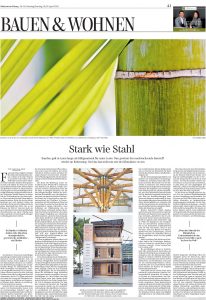
Beck, Gabriela (2020). Stark wie Stahl, in: Süddeutsche Zeitung s.41, Nr.90, Bauen und Wohnen, 18./19.04.2020. München , Germany

Beck, Gabriela (2020). Stark wie Stahl, in: Süddeutsche Zeitung s.41, Nr.90, Bauen und Wohnen, 18./19.04.2020. München , Germany
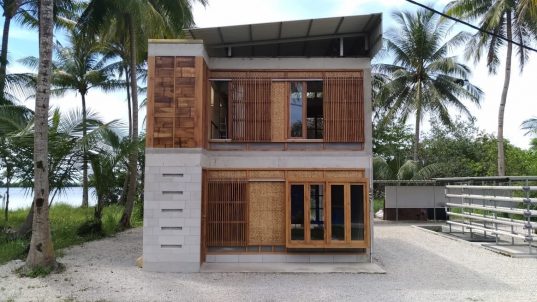

By 2025, Indonesia will need 30 million houses to house its residents, which means the country needs to build around 1.2 million new houses per year. Access to formal public housing, however, especially for the low-income group, is still elusive due to the cost and the difficulties of securing financing.The Tropical Town project by Singapore Future Cities Laboratory’s Urban-Rural Systems team around Prof. Stephen Cairns aims to develop alternative sustainable settlements that provide affordable housing for the low income inhabitants in developing countries, particularly in the tropics.
The planning strategy of Tropical Town is to integrate small living units with public spaces and productive landscapes. Each unit called Rubah can gather 100% of the rainwater for clean water, manage 100% of liquid and solid waste, afford 60% of the self-sufficient energy which will be integrated with an on-grid system with PLN, and 20% of food that family needs. The Rubah has been constructed with help of the Alternative Construction Materials Module FCL Nazanin Saeidi and Alireza Javadian and the Professorship of Dirk E. Hebel at KIT Karlsruhe using local building materials such as bamboo, Meranti timber, rammed earth, and mycelium. The kitchen has been designed as a mobile kitchen to provide the opportunity to run a small food business to increase household incomes.
The first phase of Tropical Town was an explorative study conducted through symposiums, workshops and exhibitions in Singapore, the Netherlands, Switzerland, Germany and Indonesia. The second phase of this project is focused on design development, experimental studies and the implementation of the ground floor construction of the Rubah unit along with the provision of the smallest systems in Tropical Town. The third phase will continue with design development, the experimental and construction studies of the Rubah’s upper floors.
The Alternative Construction Materials Module FCL and the Professorship of Dirk E. Hebel at KIT Karlsruhe has also taken responsibility for design and construction of the second and third phase of the project. Currently the team has finished the production of newly developed bamboo composite elements as an external wall cladding element. The team together with Mycotech from Indonesia has also finished the production and installation of innovative mycelium tiles as an internal wall cladding and is currently finalizing the design for the 3rd floor of the building, which should be finished also this year.

Alternative Construction Materials of the Future Cities Laboratory (FCL) in Singapore and Sustainable Construction at KIT Karlsruhe have received the 2017 SMART Innovation Centre’s Execution Grant and have been admitted to the Innovation Fellows Program for the project “High-Tensile Organic Fiber Reinforcement for Structural Concrete”. The Fellows Program is aimed to work with Faculty, Post Docs and researchers to prepare them to launch their company. The team was previously awarded the 2012 SMART Innovation Centre’s Innovation Grant for the project “High-Tensile Organic Fiber Reinforcement for Structural Concrete”.

Alternative Construction Materials of the Future Cities Laboratory (FCL) in Singapore and Sustainable Construction at KIT Karlsruhe, together with University of Newcastle’ Singapore branch (UoN) have received the 2017 Strategic Pilot Grant from University of Newcastle Australia for the project “Structural Behaviour and Applications of Newly Developed Bamboo Composite”. The aim of this scheme offered by UoN is to provide support for researchers to pursue high impact, strategic and collaborative research activities, specifically for young investigators.
The joint research aims to optimize the FCL’s bamboo composite materials for structural applications in the field of timber construction. Several physical and mechanical properties tests are designed to evaluate the bamboo composite material for applications such as beams, floor slabs and joints. The project will run from October 2017 to March 2018 with a potential to be extended further.

SuperMaterial is a major public exhibition by The Built Environment Trust celebrating the essential, and often hidden, elements of our surroundings. Delving into the world of academia and science, we identify the latest laboratory-based discoveries and demonstrate how they will change our world – informing the R&D departments of today and transforming the buildings of our future. The project will also explore how the historical application of raw elements and minimally processed goods – the ‘super materials’ of their time – have shaped our urban fabric.
The show exhibits bamboo composite reinforcement produced by the Assistant Professorship Dirk E. Hebel at the Future Cities Laboratory in Singapore, the ETH Zürich in Switzerland. The display is on show at the Building Centre in London from February through April 2017.
View the SuperMaterial online exhibition here.

Hebel, Dirk E., Felix Heisel, Alireza Javadian, Mateusz Wielopolski, Simon Lee, Philipp Müller, Karsten Schlesier (2016). Engineering bamboo – a green alternative under basic research Part 3, in: a+u 550, Feature: Vo Trong Nghia Architects, 2016:07, Japan Architecture and Urbanism, Tokyo, Japan
Essay Series: Engineering bamboo – a green alternative under basic research Part 3, Professorship of Architecture and Construction Dirk E. Hebel: The Advanced Fibre Composite Laboratory in Singapore investigates new methods and procedures to produce a high-strength building material out of natural bamboo fibres. If successful, the research could provide a starting point for the introduction of new and adapted technologies that take a widespread natural resource as their basic premise and give reason for people who live in the tropical belt to foster one of the most common plants in the sub-tropical climate zone.

On Thursday June 2nd, constellation.s – an exhibition by arc en reve centre of Architecture in Bordeaux, France – opened its doors with a contribution by the Assistant Professorship Dirk E. Hebel entitled Bamboo Composite Materials. The show displays test samples from the material research, especially focusing on the interface of bamboo composites and concrete.
From the curators: “In response to the worldwide transformations that are profoundly affecting the conditions in which we live, constellation.s will present individual and collective initiatives providing perspectives on tomorrow’s challenges in terms of how the urban environment is made. In response to fear, inward-lookingness, and extremism, constellation.s encourages critical thinking to help us understand the world we live in. In response to a rising tide of images, words, and spectacle, constellation.s focuses on creativity and the ways ordinary people invent their daily lives. Constellation.s embraces points of view from a range of disciplines, involving researchers, writers, architects, engineers and economists reflecting upon contemporary reality. Constellation.s will present testimonials, processes, and situations from the four corners of the world: glimmers of hope pointing to new possible horizons and ways of living together in complex societies.”
For more information, please click here.
Constellations will be open to the public until 25th September.
Hebel, Dirk E., Felix Heisel, Alireza Javadian, Mateusz Wielopolski, Simon Lee, Philipp Müller, Karsten Schlesier (2016). Engineering bamboo – a green economic alternative Part 2, in: a+u 549, Feature: RCR Arqitectes, 2016:06, Japan Architecture and Urbanism, Tokyo, Japan
Essay Series: Engineering bamboo – a green technical alternative Part 2, Professorship of Architecture and Construction Dirk E. Hebel: At the Advanced Fibre Composite Laboratory in Singapore, a new mechanical processing for raw bamboo has been developed, which leads to a fibrous material with physical features that are mainly defined by the bamboo species. This material is used as a natural fibre source for the production of a high-tensile fibre reinforced composite material aiming for the construction industry. Thereby, controlling the parameters of the underlying hot press fabrication process turned out to be crucial for a systematic tuning of the tensile capacities of the resulting composite materials.

Hebel, Dirk E., Felix Heisel, Alireza Javadian, Mateusz Wielopolski, Simon Lee, Philipp Müller, Karsten Schlesier (2016). Engineering bamboo – a green economic alternative Part 1, in: a+u, Feature: big and small, 2016:05, Japan Architecture and Urbanism, Tokyo, Japan
Essay Series: Engineering bamboo – a green economic alternative Part 1 Professorship of Architecture and Construction Dirk E. Hebel: Steel-reinforced concrete is the most common building material in the world, and developing countries use close to 90 per cent of the cement and 80 per cent of the steel consumed by the global construction sector. However, very few developing countries have the ability or resources to produce their own steel or cement, forcing them into an exploitative import-relationship with the developed world. Out of 54 African nations, for instance, only two are producing steel. The other 52 countries all compete in the global marketplace for this ever-more-expensive, seemingly irreplaceable material.
Hebel, Dirk E., Melakeselam Moges, Zara Gray, in collaboration with Something Fantastic (2015). SUDU – the Sustainable Urban Dwelling Unit, Manual and Research, Ruby Press, Berlin, Germany
SUDU―the Sustainable Urban Dwelling Unit―is a full-scale prototype for an affordable, two-story house built with local materials and traditional building techniques in Ethiopia’s capital, Addis Ababa. Developed in a collaborative endeavor between the Ethiopian Institute of Architecture, Building Construction and City Development and ETH Zurich, SUDU ties in with the rich tradition of loam construction while at the same time taking a fresh look at how to adapt this tradition to contemporary needs. Recapitulating SUDU’s idiosyncratic construction process in two lavishly illustrated volumes, this publication details the building techniques employed, such as rammed earth, mud bricks, and timbrel vaulting. The first volume additionally explores the history of Ethiopian architecture, the postcolonial nature of its current construction industry, and the challenges of the country’s rapid urbanization. The second volume, a manual with more than 600 detailed drawings and instructions, demonstrates how to build a house, step-by-step, with the most readily available building material―earth.
You can order the book right here.

Public lecture by Alireza Javadian, PhD researcher in the Assistant Professorship Dirk E. Hebel at the Future Cities Laboratory in Singapore, on November 26th at ENAC | School of Architecture, Civil and Environmental Engineering at EPFL in Lausanne titled “ Bamboo, The Green Reinforcement “. This talk introduced the research on new bamboo composite materials carried out at Advanced Fiber Composite Laboratory in Singapore and Zürich, featuring high tensile capacity composites with applications for building and construction sector.
Keynote speech by Asst. Prof. Dirk E. Hebel at the World Bamboo Congress in South Korea on September 20th, 2015. From the organizers: “In the last 20 years, the WBC as a series of Sessions & Demonstrations has grown to attract participants from more than 30 countries around the world, including world-renowned experts in bamboo design, construction, and architecture. For any professional that works with this amazing natural resource — whether a botanist, biologist, horticulturist, architect, artist, designer, businessperson, government representative, non-profit organization, or economist, the WBC has been an ideal opportunity to meet and develop collaborations in research and development, project or business development, while at the same time, advancing the social and environmental goals derived from the various applications of bamboo.”
On August 24, focusTerra opened its new exhibition entitled “BodenSchätzeWerte” or Earth’s Treasures at the ETH Zurich NO Building. Focusing on the past and future’s use of our earth’s resources, the exhibition also features several research topics of the Assistant Professorship for Architecture and Construction Dirk E. Hebel.
From the curator:
Mineral resources play a fundamental role in our daily lives. We take their availability for granted and their worldwide consumption is steadily on the rise. What are the long-term consequences of our increasing use of non-renewable resources? What challenges lie ahead for us?
This exhibition is about the formation, mining and use of mineral resources, and how we deal with products we no longer need. What can we do to ensure that resources are extracted in an economical, environmentally friendly and socially responsible way and that they are used and reused for as long and as efficiently as possible?
The exhibition will be on display from 25th August 2015 until 28th February 2016.
More information can be found here.
Article published at Sourceable: Bamboo is one of the world’s oldest structural materials and has been used in construction for centuries. Now new research could potentially bolster its continued resurgence and use as a material in green structures. Steel-reinforced concrete is the most common building material in the world. Developing countries use close to 90 per cent of the cement and 80 per cent of the steel consumed by the global construction sector. According to research by the chair of architecture and construction at Future Cities Laboratory (FCL) in the Singapore-ETH Centre, 70 per cent of damage in the built environment today is caused by corrosion of steel inside reinforced concrete structures. In addition, steel is also costly and energy hungry when it comes to production and transportation. Read more here.
Doctoral Researcher Alireza Javadian of the Assistant Professorship of Architecture and Construction Dirk E. Hebel spoke on February 13th 2015 as part of the “Friday Talks” at the Urban Redevelopment Authority Singapore (URA) on “Bamboo: The Green Reinforcement”. His talk introduced the audience to the research of new bamboo composite materials, featuring high tensile capacity with a variety of different application possibilities.
More on the Friday Talk Series can be found here.
Bislang sind Häuser und Brücken aus Bambus Einzelfälle. Forscher von der ETH Zürich wollen jetzt aus dem Süßgrasgewächs einen ökologischen und günstigen Massenbaustoff für die Städte von morgen entwickeln. Ein Beitrag von Oliver Ristau im Technology Review Magazin für Innovation. (article in German only)
The ‘Future Cities: Research in Action’ exhibition opened on 23 Jan 2015 at the URA Centre atrium in Singapore It will run till 13 Mar 2015. Focused on cities, urbanisation, and global environmental sustainability, it presents research conducted by FCL towards the development of sustainable future cities. In this context, the Assistant Profesorship of Dirk E. Hebel (who also curated the show) exhibits their work on alternative future building materials. In general, the exhibition features the work of more than 120 FCL researchers from over 30 countries over the past four years. Integrating science, design and technology, they tackle urban challenges at multiple scales, from building materials and systems to neighbourhoods, districts, cities and their hinterlands. Click here for more information.
The Ministry of Education in Singapore has awarded the Assistant Professorship of Architecture and Construction Dirk E. Hebel together with the Republic Polytechnic Singapore 320.000 Singapore Dollars within the framework of the “Translational R&D and Innovation Fund Grant” for the jointly submitted project: “Maximize bonding between Sustainable Bamboo Composite Reinforcement and Concrete”. The project is set for two years and lead by Dr. Leong Wen Shing in collaboration with the group of Prof. Hebel in Singapore. The award acknowledges the successful collaboration between the Republic Polytechnic and the Future Cities Laboratory which started in 2013.
The bamboo composite research collaboration between the Assistant Professorship of Architecture and Construction Dirk E. Hebel in Singapore and the Republic Polytechnic Singapore (Dr Wen Shing) was highlighted again this year from Jan 8th to Jan 10th at the Republic Polytechnic Open House 2015 Event.
Swiss daily newspaper Tagesanzeiger recently published a report in the research activities of the Assistant Professorship Dirk E. Hebel at the ETH Zürich and the FCL Singapore. You can read the full article here in German.

The Chair of Architecture and Construction is exhibiting its bamboo composite material in the exhibition “Magie des Einfachen” (The Magic of the Simple) at the Gewerbemuseum Winterthur from 16th November 2014 to 29th March 2015. Featuring the Brazilian Alvaro Abreu and the German Hans Hansen, the exhibition shows a variety of bamboo applications in the fields of art and construction. More information directly from the museum here and below:
Magie des Einfachen
Der Brasilianer Alvaro Abreu schnitzt Löffel aus Bambus, Hunderte, Tausende, seit vielen Jahren. Erst in einer späten Lebensphase hat er damit angefangen. Jeden Tag einen Löffel, immer aus einem einzigen Stück Bambus, keiner ist wie der andere. Der renommierte deutsche Fotograf Hans Hansen hat sich in seiner fotografischen Arbeit eingehend mit dem Werk von Alvaro Abreu beschäftigt und hat unzählige Bambuslöffel sortiert, geordnet und in einen Rhythmus gebracht, mal in strenger Balance, dann wieder in chaotischer Zufälligkeit. Das Gewerbemuseum Winterthur holt Alvaro Abreus Reich der Bambuslöffel gemeinsam mit den fotografischen Arbeiten von Hans Hansen als Schweizer Premiere nach Winterthur.
In collaboration with Haute Innovation, the Chair of Architecture and Construction exhibited its bamboo composite material at two recent international material fairs: from 21st to 23rd October at the Orgatec 2014 in Cologne, Germany as part of the Smart Office Materials exhibition, and between 11th and 14th November at the Subcontractor 2014 in Jönköping, Sweden.
At this years World Sustainable Building Conference, the Chair of Architecture and Construction Dirk E. Hebel presented two papers. In Session 48, Felix Heisel talked about “Bamboo Reinforcement – a Sustainable Alternative to Steel”, while Marta H. Wisniewska presented “Waste – a Resource for Sustainable and Resilient Future Cities” in Session 90.
On thursday, October 30th, 12:15pm, Asst Prof. Dirk E. Hebel will give a brown bag lunch talk at the Schweizer Baumuster-Centrale on the research of alternative building materials at ETH Zürich and FCL Singapore. For more information please visit www.baumuster.ch
At this year’s World Sustainable Building Conference in Barcelona WSBC2014, the Chair of Architecture and Construction is presenting two papers on its recent research. Marta H. Wisniewska is speaking on “Waste – a Resource for Sustainable and Resilient future Cities” on 29th October between 3pm and 4:30pm in Session 90: “Construction systems and materials”. Alireza Javadian is presenting “Bamboo Reinforcement – A Carbon Alternative to Steel” on 29th October between 10am and 11:30am in Session 48: “Resources and Waste”. For the Conference program, please visit here.
‘Bambus statt Stahl’ (Bamboo instead of Steel) has been published in Switzerland’s leading daily newspaper ‘Neue Zürcher Zeitung’ on Sunday 27th July. The article offers an overview on the recent developments of the Assistant Professorship Dirk E. Hebel in its bamboo composite material research and led to a wide public interest in Switzerland and Europe. The full article can be accessed here.
Very few developing countries have the resources to produce their own steel, and without this material tall buildings and urban development are all but impossible. But what if there were a local, renewable material that could be used instead of steel in reinforced-concrete buildings? And what if that substitute could be manufactured easily? These questions have motivated Dirk Hebel, an assistant professor of architecture and construction at the Future Cities Laboratory, in Singapore, to investigate a bamboo fiber composite as a possible substitute for steel reinforcement in concrete. The Future Cities Laboratory is a research arm of ETH (Eidgenössische Technische Hochschule) Zürich, in Switzerland, and is the first program under the newly formed Singapore-ETH Centre for Global Environmental Sustainability, which conducts multidisciplinary research to foster urbanization that conforms to the principles of sustainable development. If the tests on the bamboo composite are successful, developing countries will be able to manufacture and build their own urban centers without costly foreign steel imports, according to Hebel.
Read the full article here.
On July 31st, German Radio WDR5 reported on the chair’s bamboo composite research at the Future Cities Laboratory in Singapore. Above you can listen to the short interview with Prof. Dirk E. Hebel in German.
Civil Engineering is the award-winning monthly magazine of the American Society of Civil Engineers. Reaching an audience of more than 140,000 civil engineers worldwide, this magazine has the largest circulation in the engineering market and provides a compelling editorial mix of engineering projects and trends, engineering science, business and professional strategies, exploration of key issues, and news. The Civil Engineering website provides weekly news and feature content that supplements the content of the monthly print and digital editions.
On July 8th, the magazine published a lengthly interview with Prof Dirk E. Hebel on his current material research at the Future Cities Laboratory in Singapore titled: Bamboo Reinforcement Could Help Developing Cities. Research on the use of a bamboo composite material in place of steel to strengthen concrete is producing positive results—and could help some developing countries urbanize.
Read the full article here.
“The Zumtobel Group Award that we have curated for the past eight years is not a static object but an evolutionary process. Just as, under the influence of the respective times, the jury helped drive forward future developments through their decision, responding as they did so to social and technological demands and changes, we, as the curators have joined with the initiator of the award to take it forward by adding the “Applied Innovations” category. The large number of submissions, not least in this new category, and the intense debate within the jury only serve to underline the increasing relevance of the interplay between human beings and technology,” said Kristin Feireiss and Hans-Jürgen Commerell, Founders of Aedes Architecture Forum in Berlin (DE) and curators of the award.
The new APPLIED INNOVATIONS category, rewards innovations and technological solutions that make a trailblazing contribution to the realisation of a more sustainable built environment. The award in this category addresses technical universities, research institutions, individual engineers and firms of consulting engineers, as well as technology start-ups. Submissions could include innovations that have been proven in a prototype, a test series or an application in an actual project. From among 50 submissions in this category, the jury has nominated five offices and projects, including CoReSing’s material research on bamboo composite materials for the building industry.
Mor information can be found here.
CoReSing exhibited its Advanced Fibre Composite Materials at this years World Cities Summit in Singapore from June 2nd to 4th at the Swiss Pavilion. The World Cities Summit is a premier event that brings together practitioners and policy makers with leading experts in their field to identify innovative solutions to the most pressing challenges facing cities today. It is an international conference series on public governance and the sustainable development of cities.
Architectural Blog archdaily reported recently on the ongoing research of CoReSing’s bamboo composite materials for the building industry.
“Developing countries have the highest demand for steel-reinforced concrete, but often do not have the means to produce the steel to meet that demand. Rather than put themselves at the mercy of a global market dominated by developed countries, Singapore’s Future Cities Laboratory suggests an alternative to this manufactured rarity: bamboo. Abundant, sustainable, and extremely resilient, bamboo has potential in the future to become an ideal replacement in places where steel cannot easily be produced.”
The full article can be found here.
Impulse, the magazine for the German-speaking community in Singapore, recently published a short article on Felix Heisel in their issue “German Researchers in Singapore”. It describes his motivation to work in Singapore as well as his research in urban design and construction materials. The issue is available online here.
CoReSing exhibits its BaReCo Bamboo Reinforcement Research at this year’s InnovFest on 14-16 April.
InnovFest convenes leading thought-leaders, groundbreaking companies and emerging technologies to provide a holistic and comprehensive glimpse of the innovation & enterprise landscape in Asia. Focusing on “Asian Innovations Going Global” InnovFest 2014 will showcase cutting-edge research & expertise from regional universities, start-ups and industry players.
Public lecture by Dirk E. Hebel on March 27th, 2014 at the PCI, BASF Engineering Meeting in Rapperswil, Switzerland. “An der zweiten PCI BASF Ingenieurtagung möchten wir einen Ausblick in die Thematik der Umwelt wagen. Die Klimaforschung und deren Modelle zur Entwicklung von CO2 Emmisionen lassen aufhorchen und es werden Fragen gestellt, die heute noch nicht beantwortet werden können. Wir möchten mit den Beiträgen einige Lichtblicke und Lösungsansätze aus dem Baubereich aufzeigen. Mit Mut zu neuen Ansätzen können wir zu einer nachhaltigeren Umwelt beitragen.” (official program)
From the forests of Indonesia to the skylines of future cities. The rapid urbanization in emerging market countries sparks a search for new and better building materials.
This video is part of the ‘HSBC Canada in the Future’ Series, directed by Meg Andersen, The Mark Studios, Toronto Canada.
Our mobile bamboo composite exhibition has been presented at the OPEN HOUSE EVENT 2014 of our collaboration partner Republic Polytechnic Singapore (http://www.rp.edu.sg/openhouse2014/). It has successfully attracted a number of visitors and highlighted the potential impact of a bamboo composite material for the development of future cities. This has been an important event to promote our research within the Singaporean and South East Asian community.
Dirk E. Hebel’s contribution ‘Local Alternatives: Replacing Steel with Bamboo’ has been published in ‘The Economy of Sustainable Construction’.
About the Book:
30 specialists from around the world challenge the question of (higher) costs related to sustainability of the built environment
The Economy of Sustainable Construction is a publication inspired by the 4th International Holcim Forum and examines how sustainability can deliver a robust response to fiscal challenges. The book evaluates current architectural practices and models, and also introduces materials and methods to maximize the environmental, social, and economic performance of buildings.
Contained within its 400 pages are essays, reports, and case studies that examine the relationship between commercial and sustainable values, and explore the paths that construction will take in the 21st century. The Economy of Sustainable Construction points out the urgency of adapting more sustainable construction practices and buildings in the light of rapid urbanization, the vast growths of today’s giant cities, the sluggish economy, and burgeoning climate issues.
The Economy of Sustainable Construction, edited and published by Ruby Press Berlin was supported by the Holcim Foundation. More information can be found here.
Dirk E. Hebel and the group’s research on Advanced Fiber Composite Reinforcement has been featured in The Edge Singapore on December 09th, 2013.
The article titled ‘Bamboo could replace steel in reinforced concrete, says Future Cities Lab’s Hebel’ describes the background and research aims of the project. The Edge Singapore is a weekly magazine on business and investment and also includes a daily blog, which can be found here.
Public lecture by Dirk E. Hebel at the Lombok International Bamboo Architecture Festival, Indonesia on December 7th, 2013. The event is presented by the Indonesian Institute of Architects – West Nusatenggara Region in association with Budi Pradono Architects and in collaboration with The Ministry of Tourism and Creative Economy, The Government of West Nusa Tenggara and also The Regent of West Lombok.
More than 200 participants consisting of researchers, architects, engineers, artists, and students of architecture from around the world will discuss, exchange their knowledge and apply their skills towards the most common indigenous Indonesian material, which by today is almost forgotten as one of the strongest and most resiliant building substances in the tropics.
Dirk E. Hebel will report on the research under way at the Advanced Fiber Composite Laboratory at FCL Singapore and give insides on an industrialized product design, which upgrades bamboo from its image as a backward and outmoded building material to a high-tech, renewable and green resource for the future.
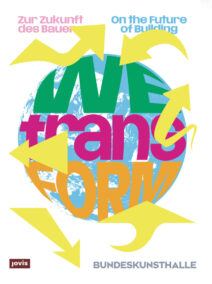
BUNDESKUNSTHALLE, ed. WEtransFORM – Zur Zukunft Des Bauens. Berlin: jovis Verlag, 2025.
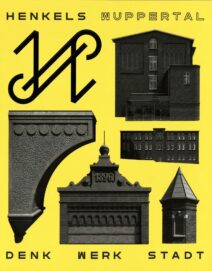
Renaissance AG, ed. Henkels Wuppertal – DenkWerkStadt. Wuppertal: renaissance Immobilien und Beteiligungen Aktiengesellschaft, 2025.
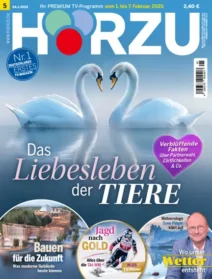
Monkenbusch, Helmut. „Bauen für die Welt von morgen.“ Hörzu, 24.1.2025
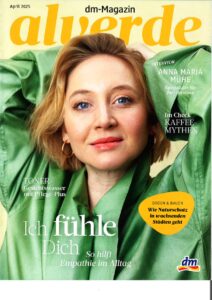
Hebel, Dirk E., Tanja Hildbrandt. „ Pilze – Netzwerker im Untergrund“. alverde, dm-Magazin, April 2025.
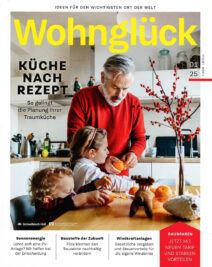
Merkert-Andreas, Carolin. “Pilze Sind Vielseitig.” Wohnglück, January 2025.
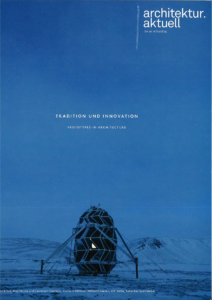
Boerman, Elena, and Dirk E. Hebel. “RoofKIT – Kohlenstoffspeicher Und Materiallager.” Architektur.Aktuell, vol. 12.2024, no. Tradition und Innovation, Dezember 2024, pp. 98–109

Hebel, Dirk E. Interview: “Vom linearen zum zirkulären Kreislaufsystem.” Interview by Sandra Hofmeister, DETAIL 11.2024, Nov. 2024.

Hebel, Dirk E., Sandra Böhm, Elena Boerman, Hrsg. Vom Bauen mit erneuerbaren Materialien – Die Natur als Rohstofflager. Stuttgart: Fraunhofer IRB Verlag, 2024.
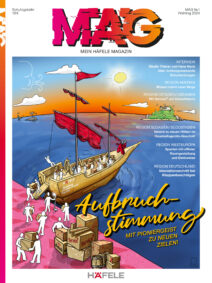
Hebel, Dirk E. “In Kreisläufen denken, entwerfen und wirtschaften.” MÄG – Mein Häfele Magazin, 2024.
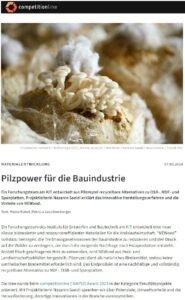
Rubel, Maike, and Patricia Leuchtenberger. Interview: “Pilzpower für die Bauindustrie.” competitionline, 7 June 2024, https://www.competitionline.com/de/news/schwerpunkt/pilzpower-fuer-die-bauindustrie-7283.html.
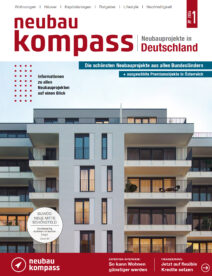
Müller, Janek. “Baumaterialien der Zukunft: Pilze, Hanf und Algen.” neubau kompass – Neubauprojekte in Deutschland, May 3, 2024. https://www.neubaukompass.de/premium-magazin/.
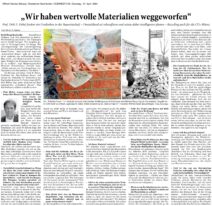
Sören, S. Sgries. “Interview: ‘Wir haben wertvolle Materialien weggeworfen.’” Rhein-Neckar-Zeitung, April 27, 2024, SÜDWEST I 28 edition, sec. Sinsheimer Nachrichten.

Schweikle, Johannes. “Auf Pilz gebaut.” Stuttgarter Zeitung, April 23, 2024, sec. Die Reportage.
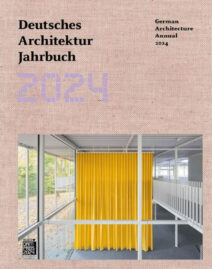
Klaaßen, Lars. “Organische Architektur – Pilzmyzel und Flachs als Materialien für die ökologische Bauwende.” In Deutsches Architektur Jahrbuch 2024, edited by Peter Cachola Schmal, Yorck Förster, and Christina Gräwe, 198–209. Berlin, Germany: DOM publishers, 2024.
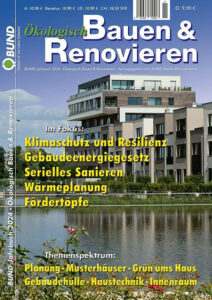
Streiff, Peter. “Zirkuläres Bauen – Kreislauf statt Abriss.” BUND-Jahrbuch – Ökologisch Bauen & Renovieren 2024, January 2024.
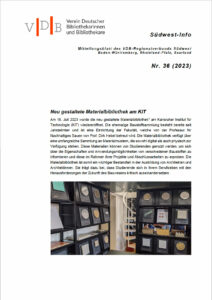
Mönnich, Michael, and Sandra Böhm. “Neu gestaltete Materialbibliothek am KIT.” Südwest-Info: Mitteilungsblatt des VDB-Regionalverbands Südwest Nr. 36 (2023), 2023.
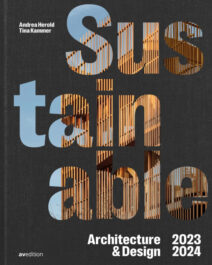
Hebel, Dirk E. “RoofKIT Wuppertal, Germany; Interview with Prof. Dirk Hebel: The aim is clear, we must forge the path ourselves.” In Sustainable Architecture & Design 2023/ 2024, edited by Andrea Herold, Tina Kammerer, and InteriorPark., 46–55. Stuttgart, Germany: av edition GmbH, 2023.
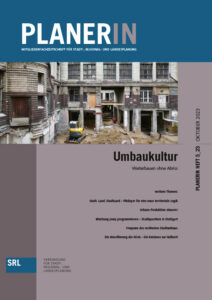
Hebel, Dirk E. “Der Bestand ist die künftige Ressource – Den linearen Umgang mit Baumaterialien schnellstmöglich stoppen.” Planerin – Mitgliederfachzeitschrift für Stadt-, Regional- und Landesplanung, Oktober 2023.
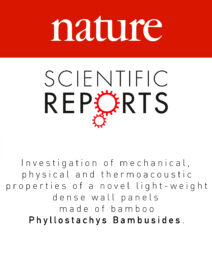
Gholizadeh, Parham, Hamid Zarea Hosseinabadi, Dirk E. Hebel, and Alireza Javadian. “Investigation of Mechanical, Physical and Thermoacoustic Properties of a Novel Light-Weight Dense Wall Panels Made of Bamboo Phyllostachys Bambusides.” Nature Sientific Reports 13 (October 26, 2023). https://doi.org/https://doi.org/10.1038/s41598-023-45515-3
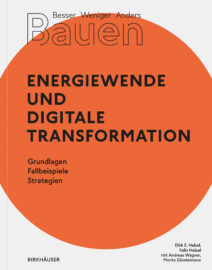
Hebel, Dirk E., Felix Heisel, Andreas Wagner, und Moritz Dörstelmann, Hrsg. Besser Weniger Anders Bauen – Energiewende und digitale Transformation. Besser Weniger Anders Bauen 2. Basel: Birkhäuser Verlag GmbH, 2023.
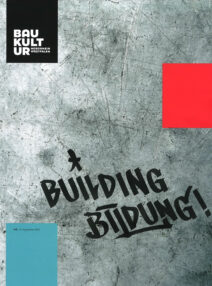
Hebel, Dirk E. “Vom Jagen, Züchten Und Ernten Zukünftiger Baumaterialien.” Baukultur Nordrhein Westfalen, September 2023.
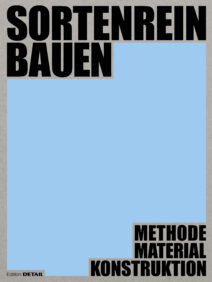
Hebel, Dirk E., Ludwig Wappner, Katharina Blümke, Valerio Calavetta, Steffen Bytomski, Lisa Häberle, Peter Hoffmann, Paula Holtmann, Hanna Hoss, Daniel Lenz and Falk Schneemann, eds. Sortenrein Bauen – Methode Material Konstruktion. Edition DETAIL. München: DETAIL Business Information GmbH, 2023.
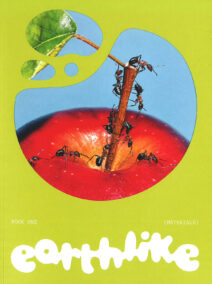
Schweikle, Johannes. “Fungi.” In Earthlike, 1:70–75, 2023.
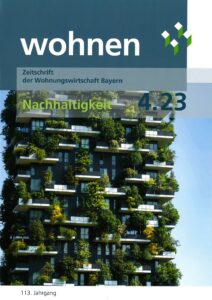
Hebel, Dirk E. “Die Stadt als Rohstofflager.” wohnen – Zeitschrift der Wohnungswirtschaft Bayern, August 2023.
Hebel, Dirk E. “Das RoofKIT-Gebäude der KIT Fakultät für Architektur – Gewinner des Solar Decathlon 2021/22 in Wuppertal.” wohnen – Zeitschrift der Wohnungswirtschaft Bayern, August 2023.
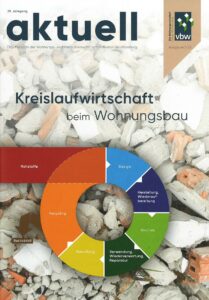
Hebel, Dirk E. “Die Stadt Als Rohstofflager.” Aktuell – Das Magazin Der Wohnung- Und Immobilienwirtschaft in Baden-Württemberg, 2023.
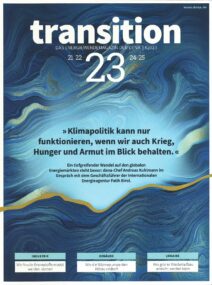
Ellinghaus, Tanja. “Bau-Kreislauf Statt Einweg-Wirtschaft.” Transition – Das Energiewendemagazin Der Dena, 2023.
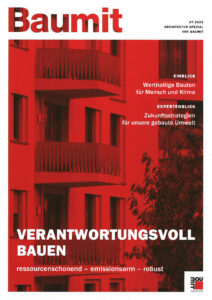
Hebel, Dirk E. “Sortenreines Konstruieren – Kreislaufbasiertes Selbstverständnis in der Architektur.” Baumit, 2023. https://www.calameo.com/read/0011023184a57c4715124.
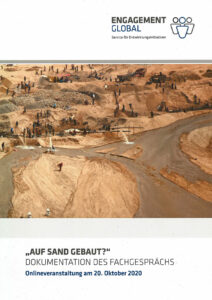
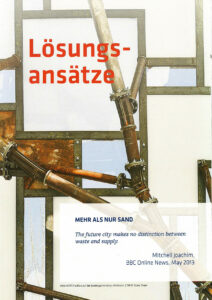
Reddy, Anita. “Bauen Als Kreislaufprojekt.” Engagement Global GGmbH, October 20, 2020. https://www.faz.net/aktuell/rhein-main/frankfurt/frankfurt-setzt-auf-recycling-nach-abriss-stadt-wird-baustofflager-18707619.html.
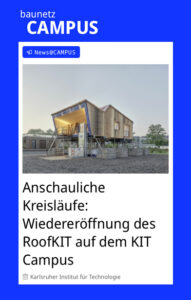
Lux, Katharina. “Anschauliche Kreisläufe: Wiedereröffnung Des RoofKIT Auf Dem KIT Campus.” Baunetz CAMPUS(blog), May 16, 2023. https://www.baunetz-campus.de/news/anschauliche-kreislaeufe-wiedereroeffnung-des-roofkit-auf-dem-campus-8235818.
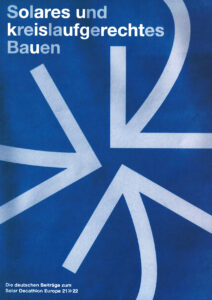
Wagner, Prof. Andreas, Nicolás Carbonare, Regina Gebauer, Prof. Dirk E. Hebel, Katharina Knoop, and Michelle Montnacher, eds. “RoofKIT.” In Solares und kreislaufgerechtes Bauen, 186–213. Wuppertal: PinguinDruck, 2023.